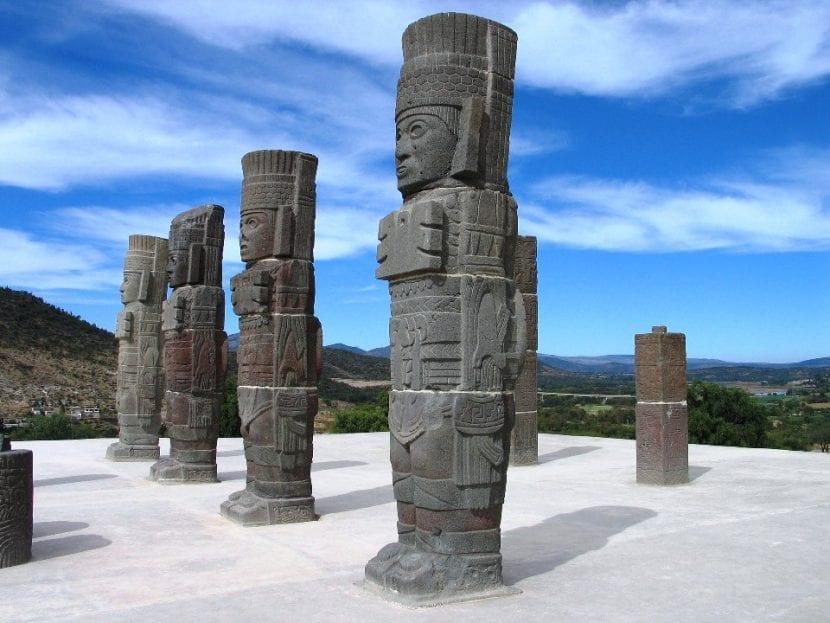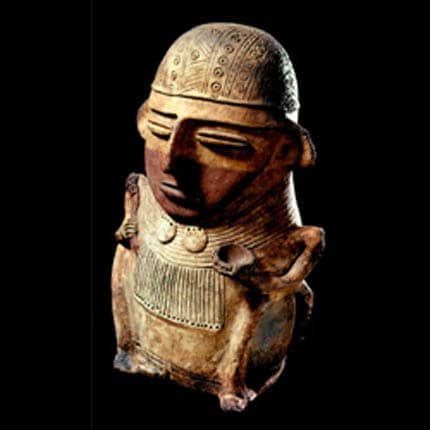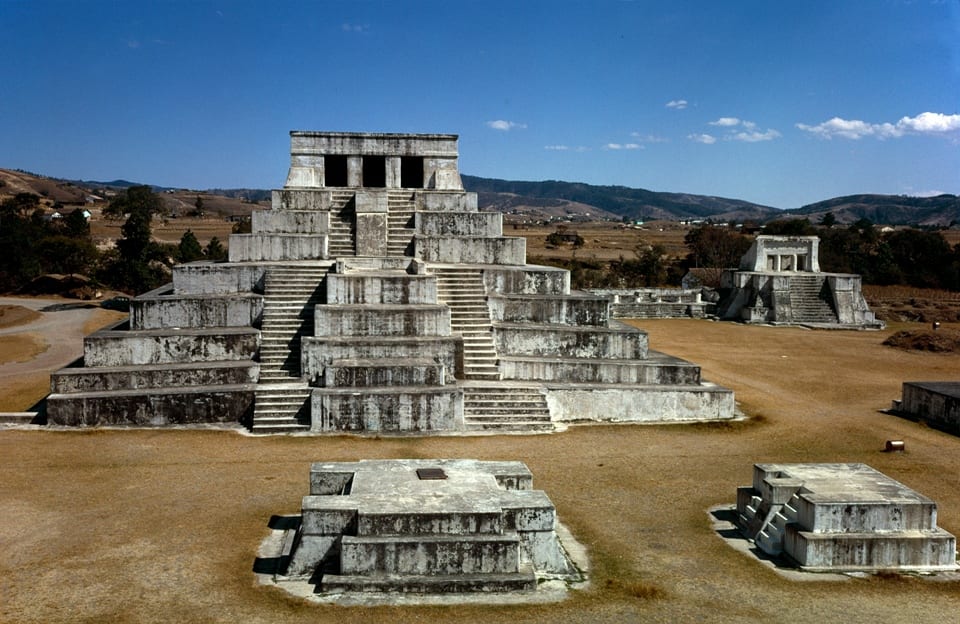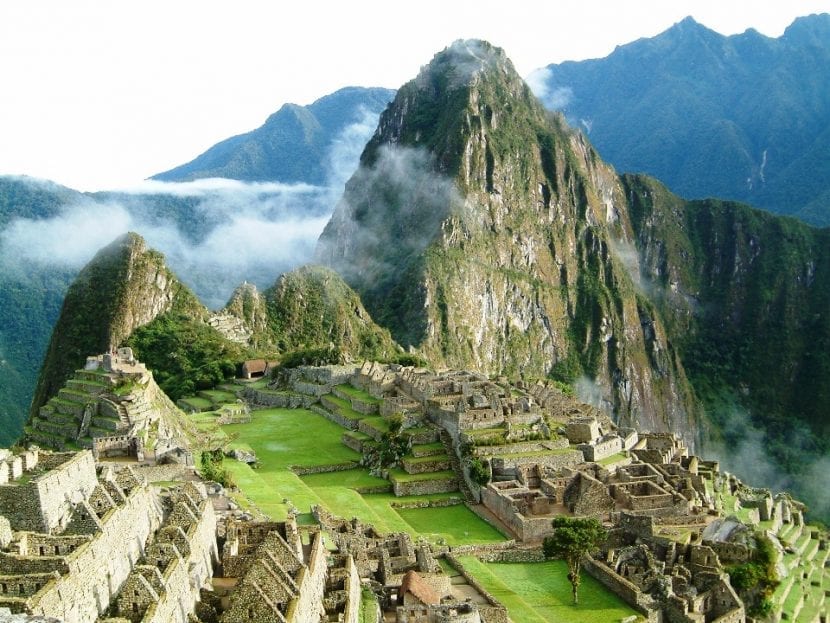
Hundreds of prehispanic cultures and dozens of original civilizations have developed in the vast territory of the American continent. There seems to be a consensus that the considered high pre-Columbian cultures arose in Mesoamerica and the Andes, they are the Anasazi, Mexica, Tolteca, Teotihuacana, Zapoteca, Olmeca, Maya, Muisca, Cañaris, Moche, Nazca, Chimú, Inca and Tiahuanaco among others..
All of them they were societies with complex systems of political and social organization and of them we have been left with files of their artistic traditions and their religious beliefs. In the rest of the continent, social and cultural progress was just as important and vital issues such as environmental management or the first constitutional democratic societies were developed. Yes, as you read it, democracy existed beyond Athens.
Some of the inventions or cultural elements that also developed on the other side of the hemisphere and the Atlantic are calendars, genetic improvement systems for corn and potatoes, anti-seismic constructions, irrigation systems, writing, advanced metallurgy and textile production. Pre-Columbian civilizations also knew the wheel, but this was not very useful, due to the orography of the land and the forests in which they settled, but it was used to make toys.
In general they had a high degree of development in the construction of temples and religious monuments, being clear examples the best-known archaeological zones of Caral, Chavín, Moche, Pachacámac, Tiahuanaco, Cuzco, Machu Picchu and Nazca, in the Central Andes; and Teotihuacan, Templo Mayor, Tajín, Palenque, Tulum, Tikal, Chichén-Itzá, Monte Albán, in Mesoamerica.
And after these general notes I do go on to detail something more about some of the most important prehispanic cultures.
America before Europeans, pre-Hispanic cultures
When we think of pre-Columbian or pre-Hispanic America, two terms that we tend to use as synonyms, but nevertheless have their nuances, we almost always go to the Inca Empire, the Mayas and the Aztecs, however behind (or before, depending on look) of these important cultures there is much more.
As you can imagine The time before the colonization of America ranges from the arrival of the first human beings, from Asia through Bering and the Neolithic revolution, until the arrival of Columbus in 1492. And also in our collective imagination we think of Central and South America, in reality it is also because the societies and peoples of North America were nomads.
Prehispanic cultures of Colombia

Before the arrival of the Spaniards, the territory of what is now Colombia, was populated by a great diversity of indigenous peoples, and although they are not as recognized as those that inhabited other parts of South America or Central America, they had an important development to artistic and cultural level.
According to studies carried out by numerous historians over the years, it has been determined that three large linguistic communities inhabited Colombia, the Chibchas, Caribe and Arawak, to which numerous tribes with different dialects and languages belonged.
The Chibcha language family
It occupied the high areas of the Eastern mountain range, the Bogotá savannah and the slopes of some rivers of the Eastern Plains, the following tribes belonged to this family: Arhuacos and Taironas (Sierra Nevada de Santa Marta), Muiscas (Central Andean Region), Tunebos (Casanare), Andaquíes (Caquetá), Pastos and Quillacingas (southern region), Guambianos and Paeces (Cauca).
La Caribbean language family
It came from the north of Brazil, they passed Venezuelan territory, the Antilles, and from there, they arrived at the Atlantic coast, from where they moved to other areas of the country. The following tribes belonged to this family: Turbacos, Calamares and Sinúes (Atlantic Coast), Quimbayas (Central Mountain Range), Pijaos (Tolima, Antiguo Caldas), Muzos and Panches (Lands of Santander, Boyacá and Cundinamarca), Calimas (Valle del Cauca ), Motilones (Norte de Santander), Chocoes (Pacific Coast).
The Arawak Language Family
They entered Colombia through the Orinoco River and settled in various parts of the territory. The following tribes belonged to this family: Guahíbos (Llanos Orientales), Wayus or Guajiros (Guajira), Piapocos (Bajo Guaviare), Ticunas (Amazonas).
Prehispanic cultures of Mexico

At its peak, the Mayan empire encompasses all of Meso America. They settled in the jungles of Guatemala, part of Yucatán, in Mexico, western Honduras and El Salvador. It is the period between the years 300 and 900 of our era that they are known as the Classic Period, and suddenly, one of the great mysteries, at its peak, they collapsed and disappeared, the latest theories in this regard speak of the contamination of the waters as the factor that caused the sunset.
Two hundred years later in Chichén Itzá they reappeared, but they were already a more weakened society. The Mayans were great masters of science and the arts, skilled in the art of weaving made from cotton and agave fiber.
Its architecture is considered the most perfect in the new world, with decorations in reliefs, paintings and openwork. The same is the case with writing that surpasses all other American writings. Among the many Mesoamerican cities that founded the most important and whose ruins still exist Tikal in the jungles of Guatemala and Chichén Itzá in Yucatán in Mexico.
The other great culture with which we identify the Central American country is the Aztec people that dominated the central and southern area of present-day Mexico between the fourteenth and sixteenth centuries. They are a people that, through military alliances with other groups and populations, experienced rapid expansion. After the death of Moctezuma II in 1520, the weakness of this great empire was revealed, derived from that rapid expansion, which facilitated the Spanish, led by Hernán Cortés, the conquest of this great empire. The economic activities of this civilization were agriculture and commerce.
Prehispanic cultures of Peru

The rise of the Incas dates back to the XNUMXth century, at the end, when a small tribe settled in the valley of Cuzco, Peru, and founded their capital. From there they subdue the rest of the tribes until they become a vast empire whose traditions, myths and worldview still remain in other peoples of the continent. One of the things that attracts the attention of This empire is that it was formed in 50 years. Its official language was Quechua. And their economic activities were based on agriculture, hunting and fishing, commerce, and mining.
Before concluding, I would like to remind you that although Incas, Mayas and Aztecs have been the civilizations that had the most vestiges and importance, they were not contemporaries throughout their development, nor were they the only ones.
this is medium medium regular
HOW GOOD THE SOCALES MATTER SAVED ME
uiiop`p` + `+ poliyuhu6yu6ytrftr
I got around a bit but thanks
I hope this circulates to others
thanks do not lose social
and copy everything
oh incredible it's so good that it made me want to scream hahahahahaha
It is very good, this is all the prehistory of Colombia
I needed the culture
do not write something that is not real the girls are from Argentina and Bolivia not from Colombia
Well this is not good but even so the teacher got me good in social =)
What are all the cultures of pre-Hispanic America called
very good save me that a suspension